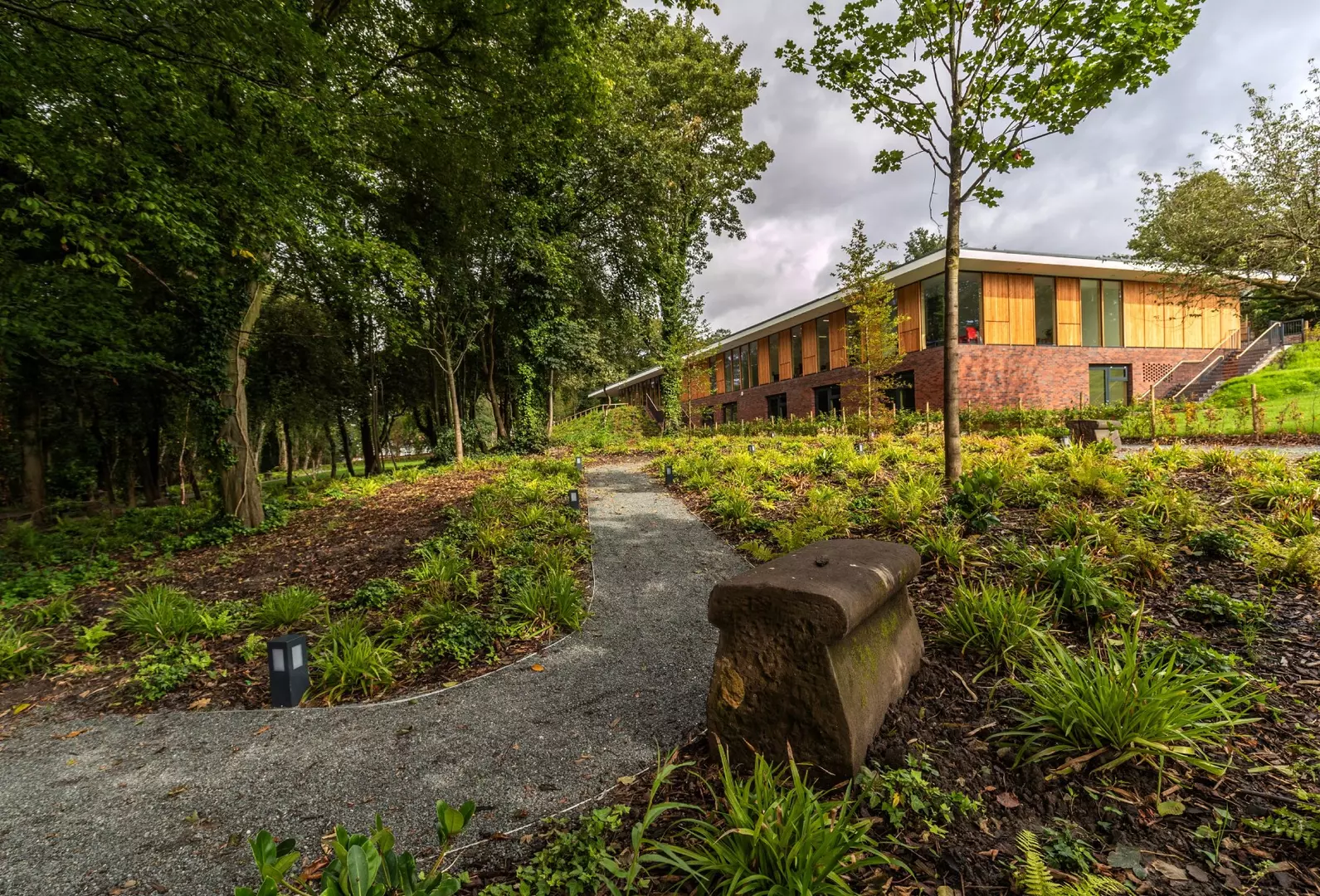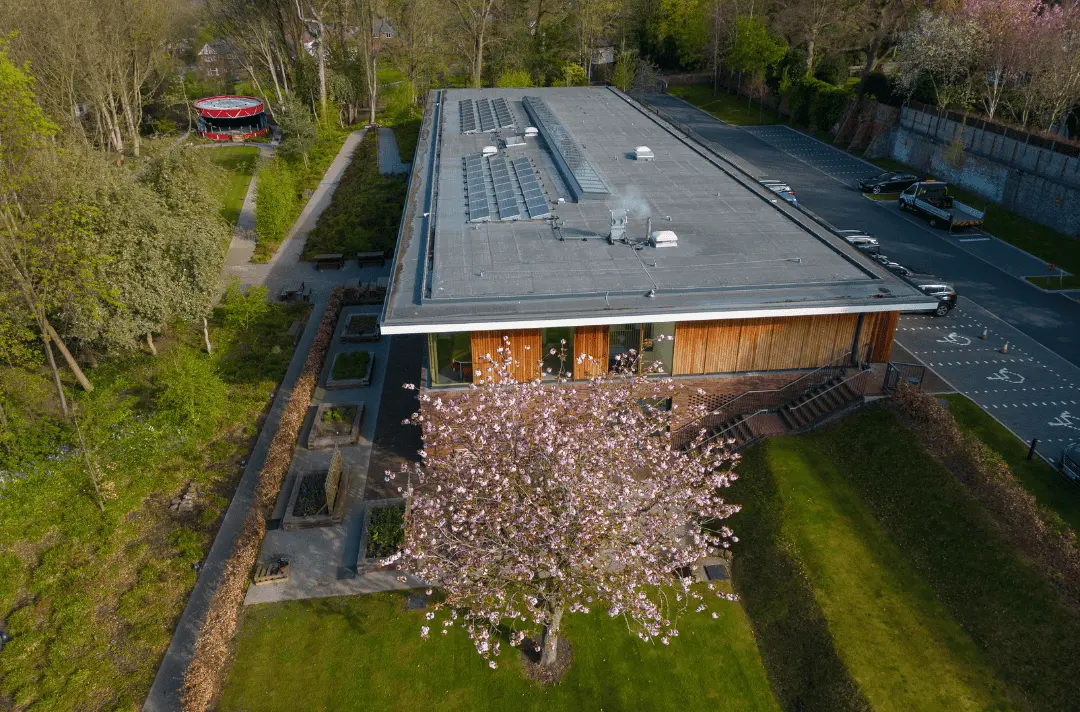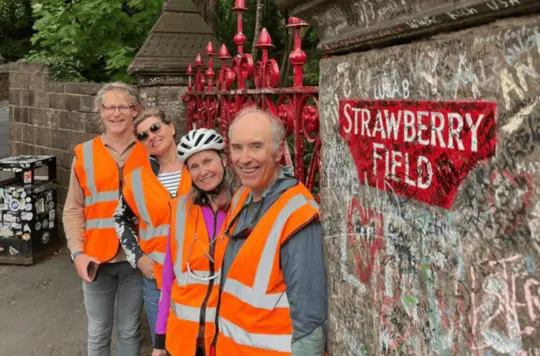Our sustainability policy
April 2024
About this policy
What is sustainability?
Sustainability is the ability to meet current needs without compromising the ability of future generations to meet their own needs. This encompasses 3 main areas: the environment, the economy and society. All must be considered for something to be truly sustainable. Simply, sustainability means we must only use as many resources as we need, not in excess, so everybody will have enough.
What does sustainability mean to us?
The impacts of climate change are progressively becoming more apparent, devastating communities and the environment globally. As a charitable organisation with community wellbeing at heart, we have a responsibility to reduce our environmental impact and CO₂ emissions. By focusing on using ethical and environmentally sustainable suppliers, ensuring energy efficiency of our building, and identifying and minimising waste, we can do our bit to protect our global community.
Sustainability has always been a main focus at Strawberry Field right from its building design and opening in 2019, to its current workings. We hope to keep our ‘Gates open for good’ – a phrase forming the foundation of our organisation’s sustainability. We are proud to have created an inclusive space for all to enjoy, providing a meaningful experience to our visitors whilst continuing to benefit our local community.
Our core principles entail:
- Compassion
- Integrity
- Generosity
- Inclusion
We fully utilise the touristic nature of Strawberry Field to provide a worthwhile and enjoyable experience for our visitors, while aiding the local community’s wellbeing and the success of our Steps to Work programmes. This enables us to continue benefiting the community through our focus on local suppliers and meeting the organisation's core values. Having a positive local impact whilst providing an exciting, inclusive and accessible experience to visitors, maximises the value of the centre. Ensuring the organisation is as sustainable as possible socially, environmentally and economically aids in securing the longevity of the organisation to continue benefitting the community indefinitely, highlighting why sustainability is so important to us and our message.
Policy Aim: To inform about the sustainable work already undertaken at Strawberry Field, our approach to sustainability and the key sustainability targets for the organisation. This will be an active document, demonstrating our progress towards these goals and our continuous strive to improve our sustainability.
Our approach to sustainability
Our approach to sustainability encompasses three pillars consisting of the social, environmental and economic impacts of our organisation to do our part in meeting the Sustainable Development Goals (SDG’s). We are very proud of what we have already achieved since our design and opening in 2019. By reflecting on this, we can see how far we have come, the necessity of this work and where we need to prioritise improvement.
Building design, materials and energy efficiency
Sustainable building practices and materials were utilised, including natural larch cladding and curtain wall mullions, with waste material used as structural fill and the original bricks salvaged. The rectangular building plan minimises building envelope and heat loss, and low underfloor heating is provide,d resulting in uniform temperature throughout the space, preventing temperature stratification and excess costs. In addition, natural and cross ventilation ensure air flow via large opening panels on the perimeter of the building, allowing fresh air circulation. The heat recovery system (thermal wheel) reutilises heat from ventilated air, recovering up to 90% of wasted heat energy. Together, these systems reduce the heating and cooling energy demand and costs. We currently have several rooftop solar panels, providing a substantial fraction of our energy. This generation of electricity offsets the building’s demand on the grid, supplying both a more environmentally and economically sustainable option. Furthermore, the building design amplifies natural daylight that in combination with LED sensor lighting, hand detecting wash basins, dual flush cisterns and a grease trap, maximises sustainable energy and resource usage and quality, increasing efficiency and reducing carbon emissions.
Suppliers
Strawberry Field follows the strict purchasing regulations set out by The Salvation Army to ensure sustainable and ethical consumption and procurement. All suppliers are required to sign a contract including guidelines and policies within, detailing the supply chain with reference to environmental impact, people and manufacture and disposal of products and materials. All suppliers are assessed and graded high/medium/low risk. We work closely with The Salvation Army procurement team to ensure these checks are completed with transparency, allowing monitoring and use of environmentally sustainable products wherever possible, and to avoid accidental greenwashing. The vast majority of our suppliers including merchandise in the gift shop and the café ingredients, are local, reducing our carbon mileage and emissions on supply transport, also making our supply chain easier to monitor. Many of the fruits, vegetables and herbs served in the café are grown in our own kitchen gardens, confirming their high quality.
Accessibility
Accessibility is a key element to social sustainability. Involving inclusivity and advocating for the needs of all people in the community to be met long-term, ensures the benefits of sustainable practices are available to everyone, so no group or individual is left behind. The Universal design of our building ensures that Strawberry Field remains an accessible and inclusive experience for all. Being as accessible as possible allows us to provide suitable placements for all our Steps trainees and not limit their aspirations from physical or invisible barriers. Accessible features throughout our building also ensure that all visitors can meaningfully experience Strawberry Field to its full potential. Some examples of accessible features we contain are wheelchair access to all areas of the building and gardens, the Changing Places facility on site, adaptable workspaces for those with physical disabilities and interior design with those with visual impairments considered. We also have subtitles, large text and adapted font in our exhibition centre.
Gardens and biodiversity
Woodland management, appropriate tree planting and the maintenance of the existing woodland floor - reinforced through shade-tolerant groundcover planting, was utilised to develop the gardens as an ideal habitat for local wildlife during the construction and landscaping of Strawberry Field.
This was supported by the installation of bird and bat boxes throughout the garden to encourage habitat creation and provide relief and shelter. Night-time light pollution was avoided with lighting designed to protect ecology and avoid light spill onto woodland trees and hedgerows. Noise levels were considered in the development and workings of the site. No amplified music or loudspeakers are located externally in the gardens for the comfort and peace of our inhabiting wildlife, allowing opportunities for visitors to form a connection with the surrounding nature.
The Kitchen Garden allows for urban food production throughout the year for use in the cafe. In Summer, lettuce, cherry tomatoes and spring onions are harvested with parsnips and leeks in the winter, providing our trainees with an opportunity to connect with the environment. By planting herbs, native wildflowers and the rose garden we hope to welcome our important native pollinators, beginning a cooperative relationship, providing them with a natural relief and stepping stone within this urban environment, and a way to sustainably maintain our own fruit and vegetable production through encouraged pollination.

Our Sustainability Targets
We have narrowed down 5 main goals to prioritise, to further improve our Sustainability for the future:
- Net zero by 2040
- Energy Efficiency
- Improved Recycling of waste and water
- Monitoring our biodiversity
- Education
We hope to use our influence to provide a model for other building designs and to inspire our visitors to be more sustainable throughout their daily lives
Net Zero by 2040
- Strawberry Fields as a part of The Salvation Army also comes under their overarching environmental and sustainable goals
- A full strategy has been drawn up aiming for The Salvation Army to become Net Zero by 2040. To achieve this, a focus on reducing the carbon emissions of the organisation and its affiliates has been made.
- Carbon emissions are monitored in relation to the 2019 baseline for the whole organisation and reported annually, to observe the progress and success of the carbon and energy usage reduction schemes.
- This comprehensive report highlights information regarding The Salvation Army’s lighting, water, and carbon usage, as well as the waste management and staff transport. • The targets and goals we hope to achieve are clearly set out, including the cost analysis, funding, projected results and suggested methods for attaining Net Zero by 2040.
View more about our Net Zero 2040 strategy and The Salvation Army's climate emergency declaration
Energy efficiency
- Strawberry Fields currently already has PV (photovoltaic) solar panels on its roof, which supply a large percentage of our energy especially during the summer months at almost 50%. Strawberry Fields was also selected as a site for the further addition of more panels.
- Simulation results demonstrated that 26.4% of our energy could be supplied by the PV panel, reducing the reliance on grid electricity, allowing a projected 16,815 kg of carbon to be avoided per year
- As well as being more environmentally sustainable, this would be more economically sustainable for Strawberry Fields, through increased electricity savings and a reduced development of energy costs.
- We hope to continuously become more efficient in our energy usage and recovery systems in the future..

Monitoring our biodiversity
- We currently have installed bird and bat boxes in our gardens to provide habitats and encourage wildlife into our gardens.
- We hope to also welcome numerous native pollinators into our gardens through the planting of wildflowers.
- However, we don’t know the extent of the success of our biodiversity remediation strategies.
- Therefore, we have plans to collaborate with Liverpool John Moores University in a project to evaluate the successes of our biodiversity enhancement scheme and determine how we could improve this.
Improved Recycling
- We have a very good recycling scheme on site, reusing plastic containers frequently where possible and off-site with Veolia and Central waste who recycle our paper, cardboard, tins, general and food waste. However, after analysis of our waste streams, we have identified areas for improvement.
- Our plastic waste in comparison to other areas is inferior, so a focus on reducing its usage and replacement with more sustainable alternatives is underway.
- While our rubbish is sorted off-site, we would like to encourage the habit of recycling amongst our staff and visitors, so we aim to add recycling bins around the site.
Education
- While we have done many amazing things for sustainability, we realised we weren’t telling anybody about it. If we hope to inspire others to be more sustainable, we realised we had to advertise it more!
- This sustainability policy is the first step to providing information about our sustainability commitments.
- An increasing number of accessible signs will be added across site to inform our visitors about our many sustainable features throughout both the building and gardens.
- Sustainability feedback forms will also be added to hear back from our visitors about the management and information available around our sustainable features and an opportunity to provide any recommendations they may have.
Thank you for reading our Sustainability Policy. For any further queries please don’t hesitate to contact us at info@strawberryfieldliverpool.com
This sustainability policy will be updated and reviewed annually to remain transparent and organised about our progress and continued journey towards a more sustainable future.

Fill out our Sustainability Feedback Form
Share feedback on Strawberry Field’s sustainability efforts and help shape greener practices, community impact and responsible operations.

How to make your visit to Strawberry Field green
As part of our commitment to sustainability, we encourage our visitors to go green and low carbon